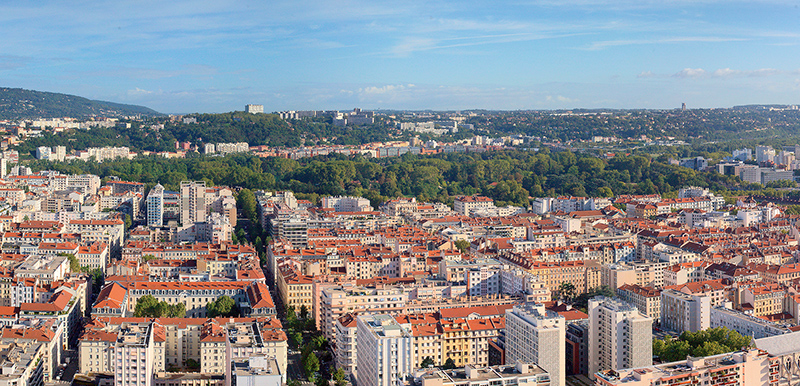In a survey published this Thursday, September 10, INSEE divided the Auvergne-Rhône-Alpes region into different employment zones to study the specificity and challenges of each. Some areas are in difficulty, suffocated by Lyon and Grenoble or impacted by the coronavirus.
INSEE is publishing this Thursday, September 10, a study on the diversity of employment areas in the Auvergne-Rhône-Alpes region. If all have their specificities, they are far from being equal, the areas of Lyon and Grenoble in particular concentrating a good part of the jobs. For the less well-off areas, home-work journeys are longer than the national average, and some are losing their inhabitants for lack of jobs. Tourist areas, for their part, have been particularly in difficulty since the coronavirus health crisis. Explanations.
Lyon, Grenoble and Clermont-Ferrand, the major employment areas
The Auvergne-Rhône-Alpes region has 39 employment zones according to INSEE. Of very variable sizes, the Lyon employment area is the second largest in France after Paris, with 1,830,000 inhabitants and 853,000 jobs. Unsurprisingly, the four largest employment areas are those of Lyon, Grenoble, Clermont-Ferrand and Saint-Etienne. By themselves, they account for nearly 50% of jobs, more than 25% being in the Lyon employment area. Within these areas, home-work journeys are fairly short. In the case of the Grenoble, Lyon and Clermont-Ferrand areas in particular, more than 90% of workers work in their area of residence. However, these areas also attract workers from elsewhere. In Lyon in particular, the trend is very marked: according to INSEE figures, 138,000 workers come to work in the Lyon employment area while residing elsewhere, but only 64,700 do the opposite. INSEE explains these figures by an increasing polarization of employment in certain employment areas in particular. Thus, the Lyon area had 107.8 jobs per 100 workers in 2006, compared to 109.4 in 2017.
These areas collateral victims of Lyon and Grenoble
In the territories near these employment areas, the reverse is true. In the Vienne-Annonay, Bourg-en-Bresse, Sources de la Loire and Issoire employment areas, only 70 to 80% of workers work where they live. This proportion drops below 70% in the areas closest to Lyon and Grenoble, and drops to 42% around Geneva. These more residential areas present strong mobility issues: commuting takes longer than elsewhere. In the Bourgoin-Jallieu area for example, near Lyon, workers travel on average 27 km to go to work, against an average of 20 km nationally. The pollution that these journeys generate is a real public health issue. On the positive side, the area is experiencing strong demographic dynamics, with a population increase of + 1.3% between 2007 and 2016, against + 0.7% on average nationwide.
Residents forced to move to find a job
Building on historical know-how, certain areas have taken advantage of their specific features. Oyonnax, for example, which specializes in the manufacture of combs, now has the highest share of industrial jobs (38%) according to INSEE. It is known today under the name of “Plastic Valley”, one of the strongest concentrations of companies of the plastics industry in Europe, notes the institute of statistics. On the other hand, these very specialized zones are experiencing a sharp drop in jobs because they are more fragile with regard to cyclical shocks in the economy. Thus, beyond its reputation for combs, Oyonnax is also the third zone to lose the most jobs in France. Many of its inhabitants have had to move to find a job. The problem is similar in low density employment areas characterized by agricultural holdings, especially cattle ranching. These lack attractiveness and inexorably lose inhabitants.
The devastation of the coronavirus in tourist areas
The year 2020 is a black year for tourism due to the coronavirus epidemic. However, the tourist sector has an important place in the regional economy with the proximity of the Alps. Thus, some areas are particularly dependent on tourist traffic: mountain areas such as Tarentaise, Maurienne, Mont-Blanc or Chablais, but also Ardèche, to a lesser extent. To give an idea, in the Aubenas area, there are 14.6 camping pitches per 100 inhabitants, compared to 1.3 on average in metropolitan France. Without tourists to fill the campsites, hotels, lodges and ski resorts, these areas have experienced major economic difficulties since the health crisis.
Read also: Auvergne-Rhône-Alpes: 65% of inhabitants crowd 11% of the territory
– .

